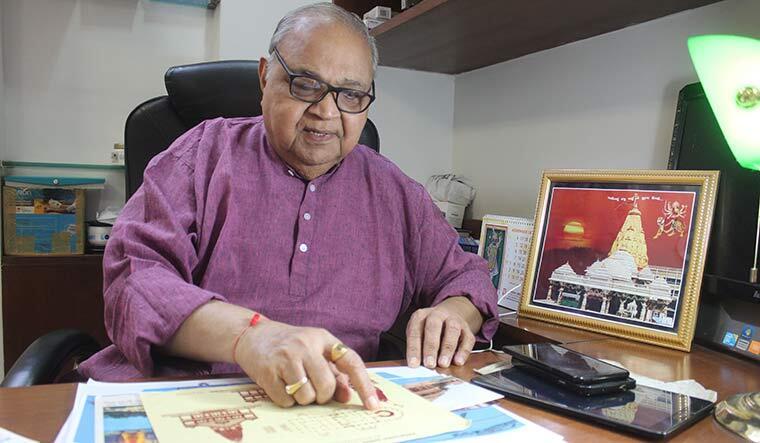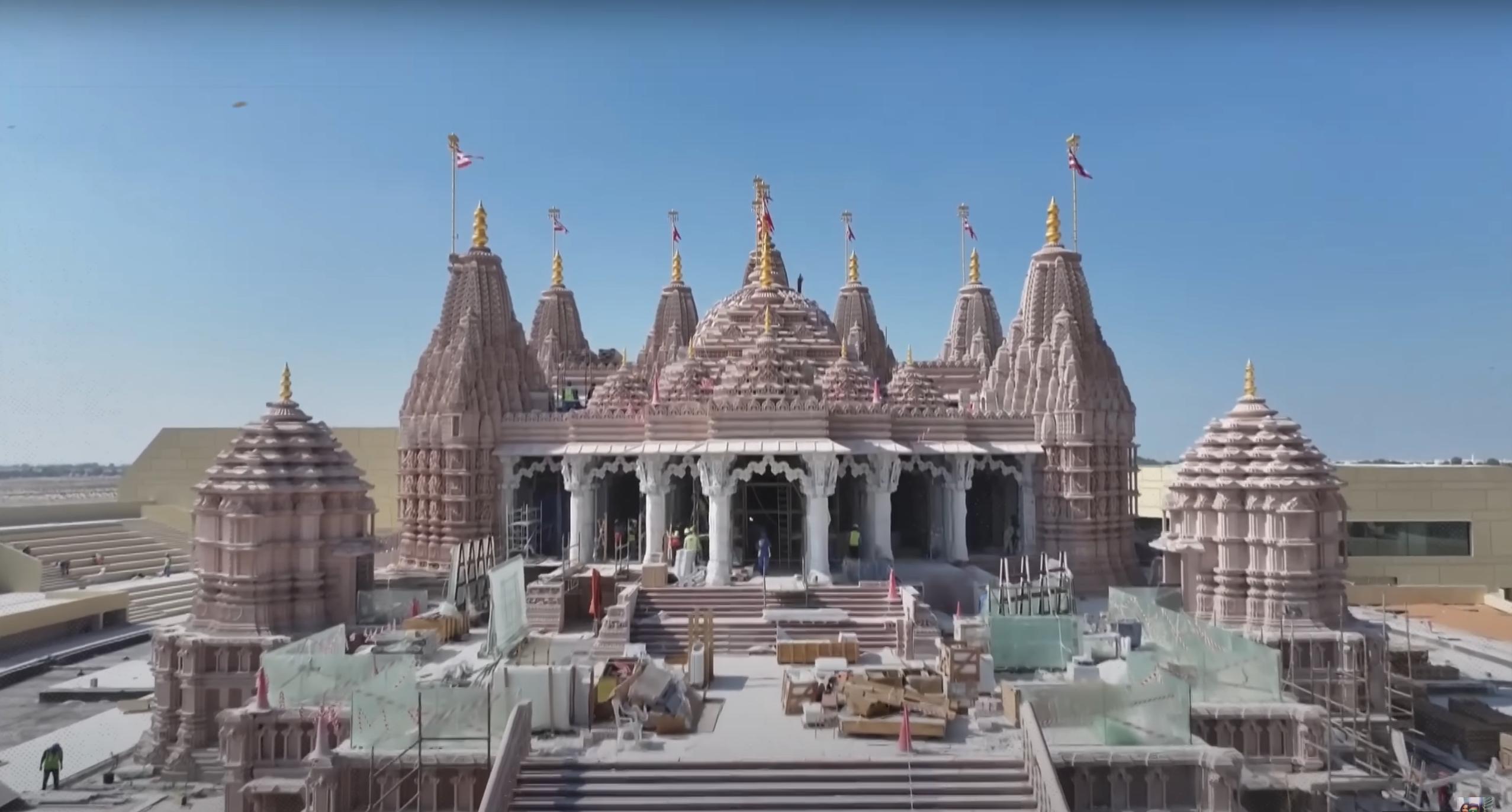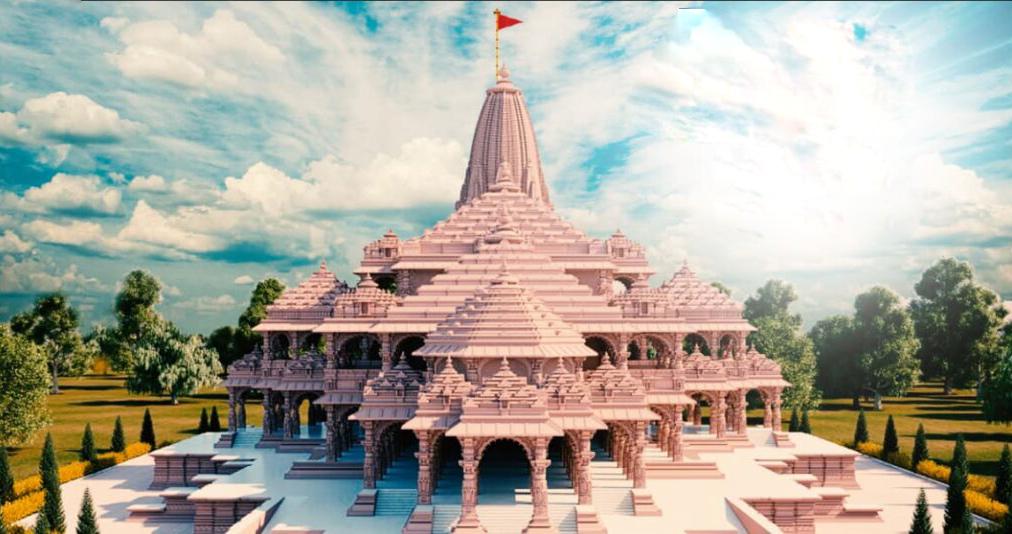



The sacred consecration ceremony held on January 22, 2024, for Ayodhya Ram Mandir marked an extraordinary milestone, etching a historic chapter in India's cultural narrative. Crafted with meticulous precision in the timeless Nagara style architecture by the revered Chandrakant B Sompura and his gifted son Ashish Sompura, the temple transcends its role as a mere place of worship. Instead, it emerges as a profound symbol of unity, a beacon of cultural pride, and a testament to the enduring faith that resonates across the diverse tapestry of India. This architectural marvel not only stands as a physical embodiment of devotion but also as a living testament to the rich heritage and spiritual essence that define the heart of the nation.
Architectural Legacy of Chandrakant Sompura

Chandrakant Sompura, the visionary architect at the helm of the Ayodhya Ram Mandir project, descends from a venerable lineage of temple architects rooted in the cultural tapestry of Ahmedabad. This family's architectural legacy, spanning across generations, is a testament to their unwavering commitment to crafting divine spaces that transcend time.
The Sompura family, with Chandrakant at its forefront, has left an indelible mark on the architectural landscape, having lent their creative prowess to the construction of more than 200 temples. Among these monumental structures are revered landmarks such as the majestic Somnath Temple, the resplendent Swaminarayan Temple, the grand Akshardham Temple complex, and the iconic Birla Temple.
The Ayodhya Ram Mandir, a crowning jewel in Chandrakant Sompura's illustrious career, now stands proudly alongside these architectural marvels. The union of tradition and innovation in the Nagara style architecture employed in the temple exemplifies the Sompura family's commitment to preserving and perpetuating India's rich cultural and spiritual heritage.
As Chandrakant Sompura's legacy continues to unfold, each temple designed and built by the Sompuras becomes not just a physical structure but a testament to their enduring passion, artistic finesse, and profound connection to the spiritual fabric of the nation. The Ayodhya Ram Mandir stands tall as a living embodiment of this legacy, inviting devotees to experience the divine through the lens of architectural brilliance.
Designing the Ram Mandir

In the pivotal year of 1989, the visionary architect Chandrakant Sompura received a momentous call from Ashok Singhal, the esteemed President of the Vishva Hindu Parishad (VHP), setting in motion the sacred journey towards the creation of the Ram Mandir. Tasked with the monumental responsibility of designing and constructing this symbol of faith, Sompura's artistic ingenuity and spiritual dedication came to the forefront.
However, the path to realizing this divine vision was not without its challenges. Faced with stringent security measures that restricted conventional survey methods, Chandrakant Sompura, undeterred, took to measuring the site with his own feet. This unconventional approach, a testament to his unwavering commitment, laid the foundation for three distinct designs meticulously crafted based on these unique dimensions.
Over the ensuing decades, the Sompura legacy found continuity in the hands of Chandrakant's son, Ashish Sompura. Together, this dynamic father-son duo embarked on the sacred journey of bringing to life the intricate details and spiritual essence envisioned for the Ram Mandir. Their collaborative efforts and artistic synergy wove a tapestry of devotion, tradition, and architectural brilliance.
As the Ayodhya Ram Mandir stands today, it stands not only as a testament to the Sompura family's artistic legacy but also as a living testament to the collaborative spirit that breathed life into every stone, pillar, and arch. The journey from conceptualization in 1989 to the grand consecration in 2024 exemplifies the enduring commitment and passion that the Sompura family poured into this timeless masterpiece.
Architectural Features

1. Nagara Style Architecture:
- The temple, designed in the Nagara style, reflects the architectural legacy that emerged in North India during the late Gupta period. This style is characterized by its distinctive shikhara resembling mountain peaks and a sanctum Sanctorum placed on a raised platform.
- Nagara-style temples, including the Ayodhya Ram Mandir, are renowned for their ornate shikhara and are often considered symbolic representations of sacred mountains, connecting the earthly realm with the divine.
2. Construction Materials:
- The temple's foundation is anchored in a solid stone base, providing a sturdy and enduring support structure. The use of approximately two lakh bricks, each inscribed with Lord Ram's name in various languages, adds a unique and sacred touch to the construction.
- Granite stones sourced from Karnataka and Telangana, combined with pink sandstone from Bans Paharpur in Rajasthan, contribute to the temple's grandeur. The meticulous selection of these materials not only ensures structural integrity but also imparts a sense of timeless elegance to the edifice.
3. Temple Structure:
- Elevated on a 12-foot Jagati and an upper plinth known as the Mahapeeth, the temple's foundational elements provide a dignified and sacred setting for the entire structure.
- The stepped shikhara, rising prominently over the five mandapas, showcases intricate craftsmanship and attention to detail. The tallest shikhara, reaching a height of 161 feet, stands as a majestic centerpiece.
- The kuda mandapa, standing three stories high, is a testament to the vertical elegance of Nagara architecture. With 300 pillars and 44 teak doors, this part of the temple complex represents a harmonious blend of aesthetic appeal and functional design.
4. Construction Techniques:
- The temple's foundation, comprising a 14-meter-thick layer of roller-compacted concrete (RCC), ingeniously mimics the appearance of artificial rock. This innovative technique not only ensures structural stability but also adds a visual dimension to the foundation's aesthetics.
- The exclusion of iron throughout the construction process is a distinctive choice, emphasizing a commitment to traditional methods. The 21-foot-high plinth, constructed with granite, serves both functional and aesthetic purposes, shielding the temple against ground moisture while contributing to its architectural grandeur.
5. Mandir Complex:
- Encompassing a sprawling 70 acres, the Ram Mandir premises are a testament to the scale and significance of the project. Within this vast expanse, the temple and its immediate complex cover 5.5 acres, serving as the focal point of devotion and cultural pride.
- Instead of a conventional protective boundary wall, a 732-meter-long wall envelops the entire complex. This distinctive choice adds a sense of openness while maintaining a symbolic boundary for the sacred space, allowing devotees to experience a harmonious connection with the surroundings.
Cultural and Spiritual Elements
1. Vishnu Panchayatana:
- Five Additional Temples
Within the expansive Ram Mandir complex, a sacred space known as Vishnu Panchayatana has been created, featuring five additional temples dedicated to revered deities. These include temples dedicated to Hanuman, Durga, Ganesha, Shiva, and Surya. Each temple contributes to the holistic spiritual ambiance, offering devotees a multifaceted experience of divine worship and cultural reverence.
- Kitchen for Lord Ram's Bhog
On the northern side of the temple complex, a specially constructed kitchen is dedicated to the preparation of Lord Ram's Bhog. This culinary space symbolizes the offering of sacred food to the deity, adding a practical and ritualistic dimension to the spiritual practices within the temple.
- Annapurneshwari Temple
Complementing the ensemble of temples in the Vishnu Panchayatana is the Annapurneshwari Temple. This dedicated space underscores the importance of nourishment and sustenance in Hindu spirituality, with Annapurneshwari being the goddess of food and nourishment. Devotees can engage in prayers and rituals within this temple, emphasizing the interconnectedness of spiritual and material aspects of life.
2. Symbolism and Significance:
- Sanctum Sanctorum ('Garbhagriha')
The heart of the temple lies in its sanctum Sanctorum, known as 'Garbhagriha.' Positioned on a raised plinth, this sacred space symbolizes the elevated spiritual connection between the worshiper and the divine. The raised platform represents a symbolic ascent towards a heightened state of devotion and communion.
- Tallest Shikhara Resembling a Mountain Peak:
The architectural pinnacle of the temple is manifested in the tallest shikhara, reaching skyward and resembling a majestic mountain peak. This towering structure symbolizes the sacred abode of the divine, echoing the cosmic axis and providing a visual representation of spiritual ascension for the devotees.
- Makrana Marble Adornments:
The temple's interior is adorned with the exquisite Makrana marble, the same pristine stone used in the construction of the iconic Taj Mahal. This choice of material not only enhances the visual splendor of the temple but also carries cultural significance, connecting the sacred space to the grandeur and beauty associated with other revered architectural marvels in India. The use of Makrana marble pays homage to the rich heritage of Indian craftsmanship and adds a touch of timeless elegance to the interior spaces of the temple.
Scientific Contributions and Engineering Excellence
1. Traditional Materials and Techniques:
- Use of Traditional Materials
The Ayodhya Ram Mandir is a testament to the incorporation of traditional construction materials. Granite, sandstone, and marble, revered for their durability and cultural significance, form the fundamental elements of the temple's architecture. This choice not only pays homage to historical building practices but also ensures a seamless integration with India's architectural heritage.
- Absence of Cement and Mortar
A distinctive feature of the temple's construction lies in the deliberate exclusion of cement or mortar. This departure from modern construction norms emphasizes a commitment to traditional building techniques. The absence of cement is expected to contribute to the longevity of the structure, allowing it to withstand the test of time through the preservation of ancient craftsmanship.
2. Durability and Innovation:
- Lock and Key Mechanism
The temple incorporates a unique lock and key mechanism, employing a combination of granite and sandstone. This innovative approach not only serves a functional purpose but also enhances the structural integrity of the temple. The thoughtful combination of these materials contributes to the overall durability, ensuring that the temple withstands environmental factors and endures for generations. The design with the lock and key mechanism symbolizes the secure and timeless nature of the sacred space.
- Scientific Contributions from CBRI and ISRO
The project enlisted the expertise of top Indian scientists, including Pradeep Kumar Ramancharla from the Central Building Research Institute (CBRI). Their contributions, coupled with technologies from the Indian Space Research Organisation (ISRO), showcase a fusion of traditional architecture with modern scientific advancements. This collaboration ensures not only the preservation of cultural authenticity but also the incorporation of cutting-edge engineering techniques to enhance the temple's overall resilience.
3. Innovative Ceremony:
- Surya Tilak Mirror
An innovative ceremony is planned for every Ram Navami day at noon. A special 'Surya Tilak' mirror, designed collaboratively by scientists from CBRI and the Indian Institute of Astrophysics (IIA), will be utilized for the ceremonial anointing of Lord Ram. This unique mirror harnesses sunlight to symbolize divine blessings, seamlessly blending age-old traditions with innovative technology. The incorporation of scientific advancements into sacred ceremonies showcases a harmonious convergence of tradition and modernity within the temple's sacred rituals.
Conclusion
In the sacred soil of Ayodhya, the resplendent Ayodhya Ram Mandir emerges as a profound testament to the rich tapestry of India's architectural heritage and cultural depth. Crafted with unwavering devotion and visionary brilliance by Chandrakant Sompura and his sons, this temple stands not merely as a religious edifice but as an awe-inspiring marvel that bridges the realms of time and tradition.
The fusion of the Nagara style, meticulously designed by the Sompura family, seamlessly intertwines with the cultural fabric of India, reflecting the nation's spiritual ethos and architectural finesse. Beyond its physical grandeur, the Ayodhya Ram Mandir embodies a sacred narrative, encapsulating the essence of devotion and cultural pride that resonates across the diverse landscapes of the country.
The ingenious blend of traditional craftsmanship, marked by the use of granite, sandstone, and marble, finds harmony with innovative engineering techniques. The deliberate exclusion of cement, the lock and key mechanism, and the collaborative efforts of eminent scientists from CBRI and ISRO underscore a commitment to both heritage and progress. This synthesis of tradition and modernity not only ensures the temple's longevity but also positions it as a beacon of enduring faith and cultural resilience.
As the temple takes its place as a focal point of spiritual devotion, it weaves itself into the intricate tapestry of India's cultural identity. The Vishnu Panchayatana, the symbolic sanctum Sanctorum, and the use of Makrana marble all contribute to a holistic spiritual experience within the temple complex. The innovative ceremony featuring the 'Surya Tilak' mirror further exemplifies a harmonious convergence of ancient rituals and modern scientific advancements.
In its entirety, the Ayodhya Ram Mandir transcends the confines of a mere architectural marvel; it becomes a living narrative, echoing the cultural pride and spiritual unity of a nation. As devotees and admirers gather in reverence, this sacred space stands poised to etch an indelible mark on the collective consciousness of India, inviting all to partake in the enduring legacy of faith, tradition, and the timeless beauty of the Ayodhya Ram Mandir.
explore further
Latest from Editorials
More from Publications
Resources
Dwello, for every home buyer, is a way to go from 'I feel' to 'I know', at no extra cost.




